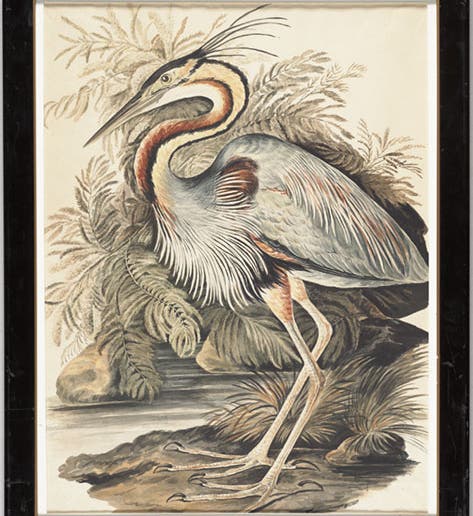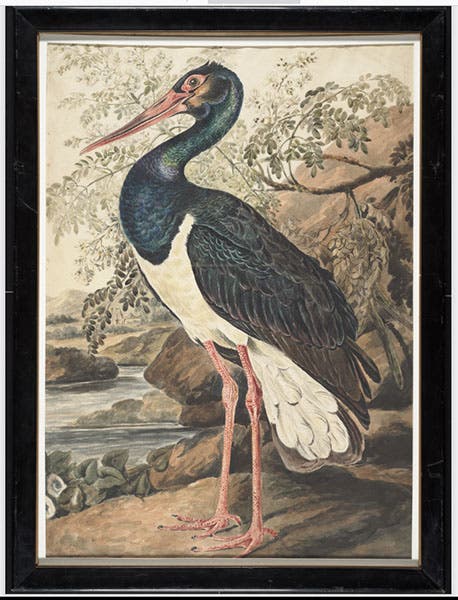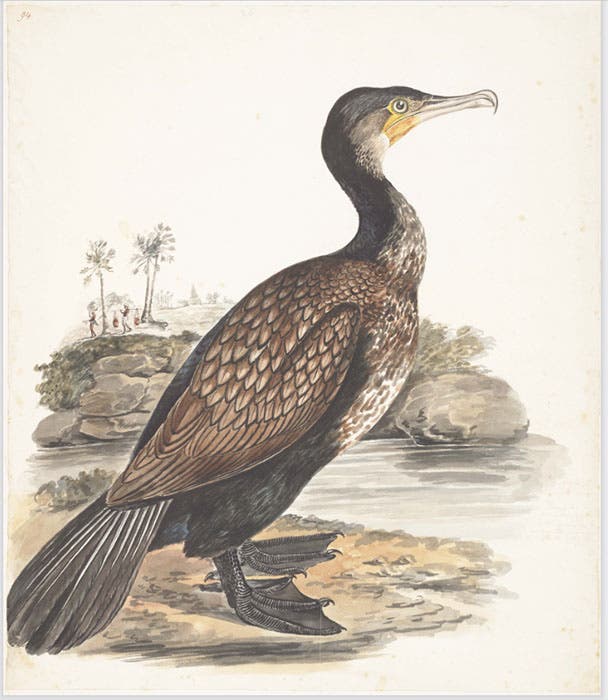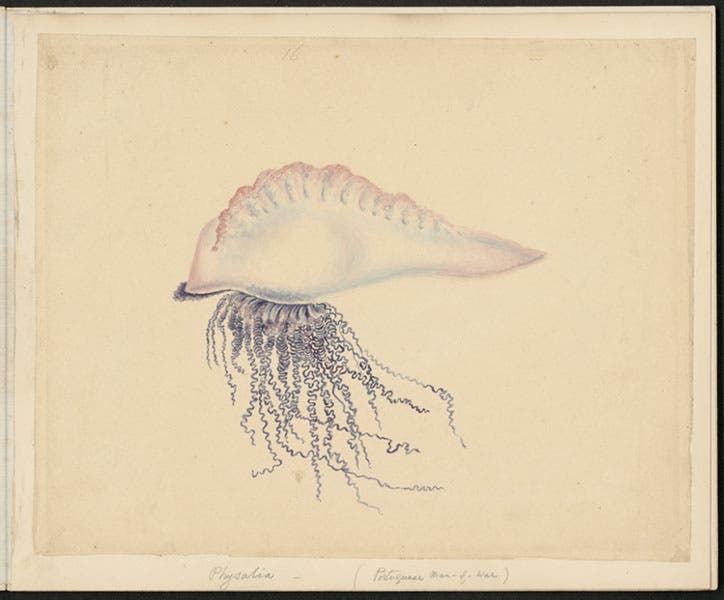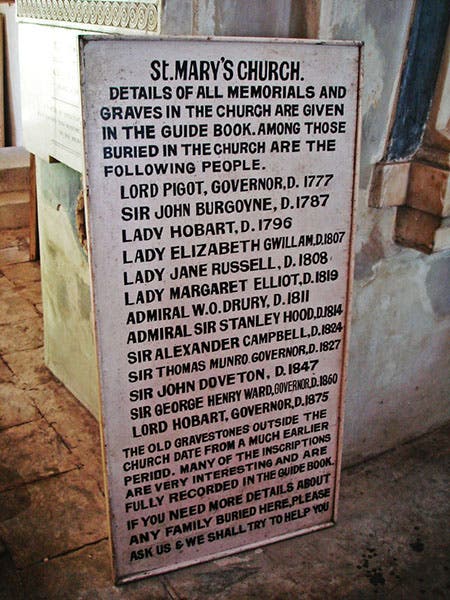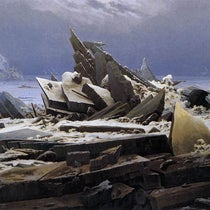Scientist of the Day - Elizabeth Gwillim
Elizabeth Symonds Gwillim, an English bird artist, was born on or about Apr. 21, 1763, in Wye in Hereford. She married a local lawyer, who just happened to get posted to Madras (Chennai) in India in 1801 as judge of the high court. Elizabeth accompanied him to Madras, as did her sister Mary, who was also a painter. Elizabeth spent her time painting the birds of Madras (as well as some flowers and fish). Unlike most bird painters of the day, she painted live birds, in their natural habitats.
Elizabeth also adopted the practice, unprecedented at that time, of painting her birds life-size. Since some of the Indian birds are very large, this means that often her paintings were over three feet tall. We tend to think of John James Audubon as the first to paint birds life-size, but Gwillim was working a full 20 years before Audubon.
Elizabeth died suddenly in 1807; the cause of her death is unknown. Her husband returned to Hereford and brought Elizabeth's paintings with him. We know nothing of their further whereabouts until 1924, when a rare-book buyer for McGill University in Montreal, Casey Wood, inquired in a London book shop if they had any bird art, and the proprietor brought up from the basement a huge portfolio of some 164 paintings, of which 121 were of birds. At the time, no one had heard of Elizabeth Gwillim, and Wood could find out very little about her, although he did discover that there is an inscribed memorial stone outside the church of St. Mary’s in Madras, where she is buried. And, most importantly, Wood acquired all 164 paintings for McGill, where they still reside in the University Library’s Archival Collection.
We also know that Elizabeth and Mary wrote quite a few letters home in their 6 years in Madras; these were saved by the family and acquired by the British Library in the 1970s. They have been transcribed by participants in what is called the Gwillim Project and are available online. I read through some of them, but the ones I looked at do not shed any light on her bird paintings (or the cause of her death). Perhaps some scholar with a thesis deadline will take a more thorough look and tell us more about the life of Elizabeth Gwillim.
Since we do not know much more about her, all we can do here is display some of her artwork, which does speak volumes about Elizabeth’s abilities as a bird painter. McGill Library has made all of her watercolors available online, so you can browse through the thumbnails and choose your favorites. I selected five to include here, and since Elizabeth’s work reminds me a little of Edward Lear, who favored large shore birds for his subjects, I have chosen mostly the Indian versions of Lear’s birds. They include a purple heron (first image), a black stork (second image), a cinnamon bittern (third image), an Indian shag (cormorant; fourth image), and, for a change of pace, a Portuguese man o’ war (fifth image).
A woman as skillful as Elizabeth deserves a portrait, but I could not locate one, or any mention of one. That is a shame. But I was happy to discover a placard inside St. Mary’s Church in Madras, that lists the important people buried in the church and churchyard, and Elizabeth’s name is right there in the middle (sixth image). Fame has not completely eluded her.
Dr. William B. Ashworth, Jr., Consultant for the History of Science, Linda Hall Library and Associate Professor emeritus, Department of History, University of Missouri-Kansas City. Comments or corrections are welcome; please direct to ashworthw@umkc.edu.

